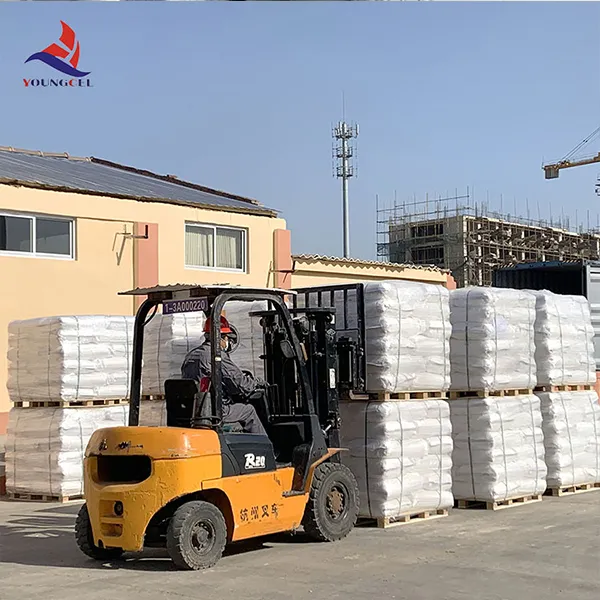Exploring HPMC Cellulose Properties, Applications, and Advantages
Hydroxypropyl methylcellulose (HPMC) is a cellulose derivative widely recognized for its versatility and effectiveness in various industries. This semi-synthetic polymer is produced through the chemical modification of natural cellulose, incorporating hydroxypropyl and methyl groups into its structure. This article will delve into the properties, applications, and advantages of HPMC cellulose, highlighting its significance in today's market.
Properties of HPMC Cellulose
HPMC possesses a range of properties that make it an attractive ingredient in many applications. Its solubility in both cold and hot water varies depending on its degree of substitution, thus allowing customization for specific uses. HPMC typically appears as a white to off-white powder, which, when mixed with water, forms a clear, viscous solution.
One of its most notable characteristics is its film-forming capability. When dried, HPMC solutions create flexible, transparent films, making the material suitable for applications that require coatings. Furthermore, HPMC is known for its excellent thermal stability, which ensures that it maintains its functional properties even under varying temperature conditions.
Another important property is its ability to act as a thickening agent. It increases the viscosity of aqueous solutions, providing the desired texture and consistency in formulations. This versatility is crucial in industries such as food, pharmaceuticals, and cosmetics, where the right texture is often key to consumer acceptance.
Applications of HPMC Cellulose
HPMC cellulose finds its use in an array of applications across various sectors. In the food industry, it serves as a thickening agent, stabilizer, and emulsifier, helping to achieve the desired consistency in products like sauces, dressings, and baked goods. Furthermore, HPMC is often used in gluten-free and vegan products as a binding agent, improving texture and moisture retention.
In the pharmaceutical industry, HPMC is particularly valuable as a excipient in tablet formulations. Its gel-forming properties allow for controlled drug release, which is essential for developing sustained-release pharmaceutical products. Additionally, HPMC is used in eye drops due to its excellent biocompatibility and ability to retain moisture, making it ideal for treating dry eye conditions.
hpmc cellulos

The cosmetic and personal care sector also utilizes HPMC for its thickening and film-forming properties. It can be found in lotions, creams, and gels, where it contributes to desired sensory properties and helps stabilize emulsions. HPMC’s ability to improve the feel and stability of formulations makes it a preferred ingredient in many cosmetic products.
In construction, HPMC is used as a viscosity modifier and water retention agent in cement-based formulations. It enhances the workability of mortars and plasters, allowing for better application and finishing. Additionally, its water retention properties ensure that the mixtures retain moisture for longer periods, promoting better curing.
Advantages of HPMC Cellulose
The advantages of HPMC cellulose are numerous, making it a sought-after ingredient across diverse industries. One of its key benefits is its non-toxic nature and biodegradability, aligning with the growing demand for sustainable and environmentally-friendly products. This makes HPMC an attractive choice for manufacturers looking to reduce their ecological footprint.
Flexibility in application is another significant advantage. The ability to modify its properties through varying degrees of hydroxypropyl and methyl substitution allows formulators to tailor HPMC for specific requirements and end-use conditions. This adaptability enhances its appeal in complex formulations where multiple functional characteristics are needed.
Additionally, HPMC is an effective approach to enhance the overall product stability and shelf-life. Its ability to form stable emulsions and prevent separation in liquid formulations ensures that products remain effective over time, providing both manufacturers and consumers with reassurance regarding quality and performance.
Conclusion
In summary, HPMC cellulose is a versatile polymer with an extensive range of applications that play a critical role in various industries, from food to pharmaceuticals, cosmetics, and construction. Its unique properties—solubility, film-forming, and thickening capabilities—combined with its environmental benefits, establish HPMC as a valuable ingredient in the formulation of modern products. As industries continue to evolve and emphasize sustainability and efficiency, the importance of HPMC cellulose is set to grow even further, reinforcing its status as a key player in the materials landscape.
-
Rdp Powder: Key Considerations for Wholesalers in the Building Materials IndustryNewsJul.08,2025
-
Key Considerations for Wholesalers: Navigating the World of Hpmc - Based ProductsNewsJul.08,2025
-
Hpmc Detergent: Key Considerations for WholesalersNewsJul.08,2025
-
Key Considerations for Wholesalers: China Hpmc For Tile Adhesive, Coating Additives, Concrete Additives, and MoreNewsJul.08,2025
-
Crucial Considerations for Wholesalers: Navigating the World of Construction MaterialsNewsJul.08,2025
-
Key Considerations for Wholesalers Sourcing Additive For Cement, Additive For Concrete, Additive For Putty from Additive Manufacturer Shijiazhuang Gaocheng District Yongfeng Cellulose Co., Ltd.NewsJul.08,2025




